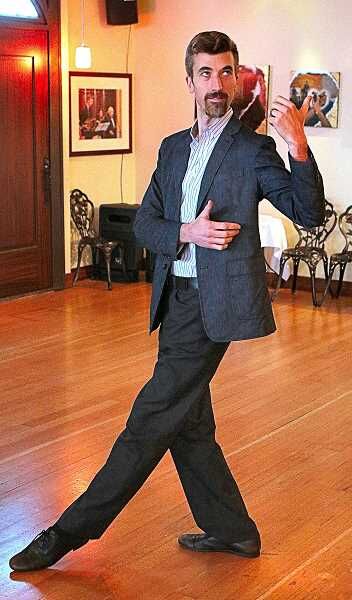Reed physics major turns tango teacher in Southeast
Published 12:00 am Friday, March 31, 2017

- Helping people of all ages and skill levels enjoy Argentine Tango is what ex-Reed-student Alex Krebs does - and he enjoys it.
For 16 years, folks who have wanted to learn and enjoy dancing the Argentine Tango have made their way out to 6305 S.E. Foster Road, across the street from the Holgate Boulevard Round Table Pizza — the studio of Alex Krebs: “Tango Berretin”.
Trending
The California native said he came as a student to Reed College from 1995 to 1999 to study physics and music. “Yes physics, and music — I was a double major!” Krebs grinned.
During his first year, he also took a ballroom dancing class. “Of all the dances, I liked ballroom tango the best,” he recalled.
During his freshman summer back home, Krebs looked for places to dance, and found a teacher of Argentine Tango. “He said it’s different from ballroom tango; I’d had to start all over, learning — and I never did ballroom dancing after that. A year later, I traveled to Argentina and — for two months — I danced ten hours a day.”
Because of his expertise in Argentine Tango, Krebs started teaching others the dance back in Portland.
“I could never see myself in a physics-related career,” Krebs reflected. “And regarding music, I wanted to score films — which turned out to be creatively confining. So, while I never considered teaching dance as a career path, it landed in my lap, and I’m fortunate that it did!”
He’s always been musical — he started playing violin at age three, and moved to the saxophone when he was 11. He still plays sax in local bands. But, his love of Argentine Tango music led him to the “bandoneon”, an accordion-like instrument often mistaken for a concertina.
“At first I thought the bandoneon was too difficult, and I didn’t have the time for it. But after being given a bandoneon, I got addicted to practicing it, and soon found other musicians — until finally we had a sextet, and now we have a band with six albums released, and we play tango festivals all over the United States.”
As for his studio — he came upon the building, near the corner of S.E. Foster Road and Holgate Boulevard, while house-hunting in 2001. He passed on the house behind the building, but purchased the building itself — complete with a legally-zoned apartment in the back — and opened his studio while living there for several years.
Although it was in disrepair at the time, over the years Krebs has turned the building into a first-class dance studio, complete with social areas.
Krebs quickly dispelled what he considered to be the greatest misconception of his style of terpsichore: “People’s perception of tango dancing is fishnet stockings, a red rose stem clenched in the teeth, and deep dipping.
“You won’t find dancers performing acrobatics here, because Argentine Tango is a ‘walking dance’ — if you can walk, you can dance,” Krebs assured. “You needn’t be young, fit, and athletic — or even highly coordinated. We have people from all walks of life, in all demographics, from teenagers to people into their 70s.”
Instead of teaching a series of dance steps, “We’re teaching people how to be aware of their body, and how to communicate with their bodies; in a way, it’s like learning a kinesthetic foreign language,” explained Krebs.
One can learn the basics during an hour class which precedes the evening-long Saturday night dance gathering. But, to become more proficient, students take group classes for a couple of months and practice at the dances. “How far you can go depends on how courageous you are, and how much natural ability you have,” Krebs smiled.
“This is a friendly, welcoming community, and if you’ve wanted to dance, even if you don’t see yourself as a dancer, don’t have a partner, or any dance shoes, you can still find out if you’ll enjoy Argentine Tango by coming to one of our Saturday evening events. You’ll never really know if you enjoy it, unless you try.”
To learn more, go online: http://www.tangoberretin.com





